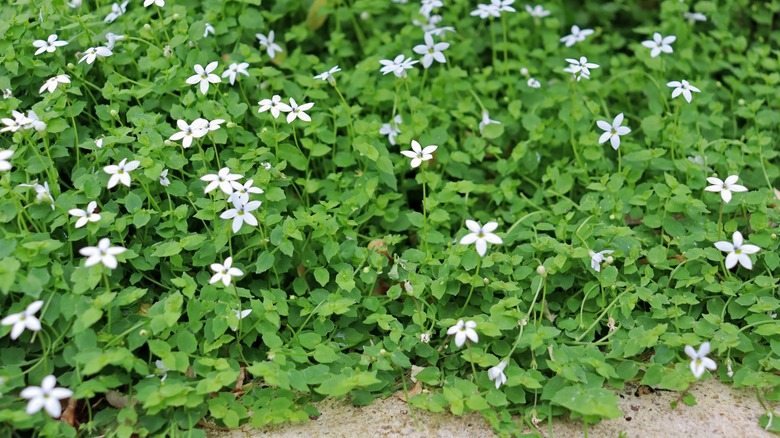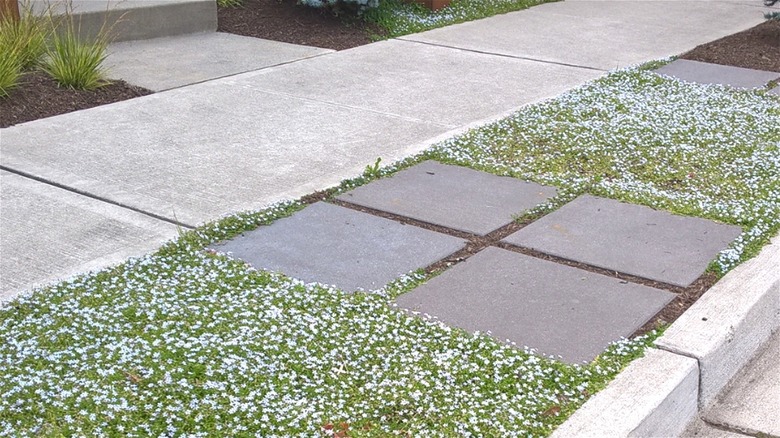How To Control Blue Star Creeper If It Has Taken Over Your Yard
We may receive a commission on purchases made from links.
Are you feeling frustrated because the lovely blue star creeper you planted as a ground cover or lawn alternative is quickly taking over your yard and spreading out of control? This attractive creeper will stop weeds from growing and is considered an excellent ground cover plant to grow instead of grass, but the downsides of choosing blue star creeper as a grass alternative for your yard are that it grows quite aggressively and can choke out other plants. But fear not, as there are some clever tactics you can use to keep this plant from completely taking over. You can try installing a physical barrier, cutting it back regularly, or pulling up any stray shoots by hand. If your blue star creeper has truly crept out of control, you can get rid of it altogether by either digging it up manually or by using a weed killer.
Blue star creeper (Isotoma fluviatilis) is native to Australia and can be grown in USDA Hardiness zones 6 through 8. It forms a dense mat and spreads through runners that take root when they make contact with the soil. Blue star creeper is a plant that's highly adaptable to different soil conditions and will grow happily in dappled sunlight or partial shade. All of these qualities make blue star creeper a popular substitute for turf, but they can also make the plant challenging to corral into just one corner. Because Isotoma fluviatilis spreads quickly — up to 18 inches per year — it does have the tendency to invade neighboring areas in your yard.
Clever ways to control and remove blue star creeper
To keep your blue star creeper from taking over your lawn or other garden spaces, consider installing a solid physical barrier like this Laveve Corrugated Metal Garden Edging. Choose an edging that's at least 12 inches high so you can sink it deep in the soil, leaving just a few inches above ground. This should confine the roots and stop the plant from spreading too far, so you'll only have to cut back the growing stems. Planting blue star creeper between concrete, stepping stones, or stone barriers can work similarly. You should also avoid giving this plant too much water or fertilizer, as this will only make it grow faster. Prune the plant once per year in late fall and trim any escaping shoots as needed.
But if all this sounds like too much effort, you might want to get rid of blue star creeper altogether. While the plant can spread quickly, its roots are relatively shallow. You can dig this plant up manually, but you should ensure you get all the roots as well as any small plants that have sprouted up nearby. It's important to monitor the area continuously and remove any plants as they pop up. Alternatively, a broadleaf herbicide can be effective in killing the creeper, but you'll have to be careful not to let the spray drift onto your other plants. If you love the look of this plant but can't stand the constant trimming, blue star creeper is one of many trailing flowers perfect for hanging baskets.

